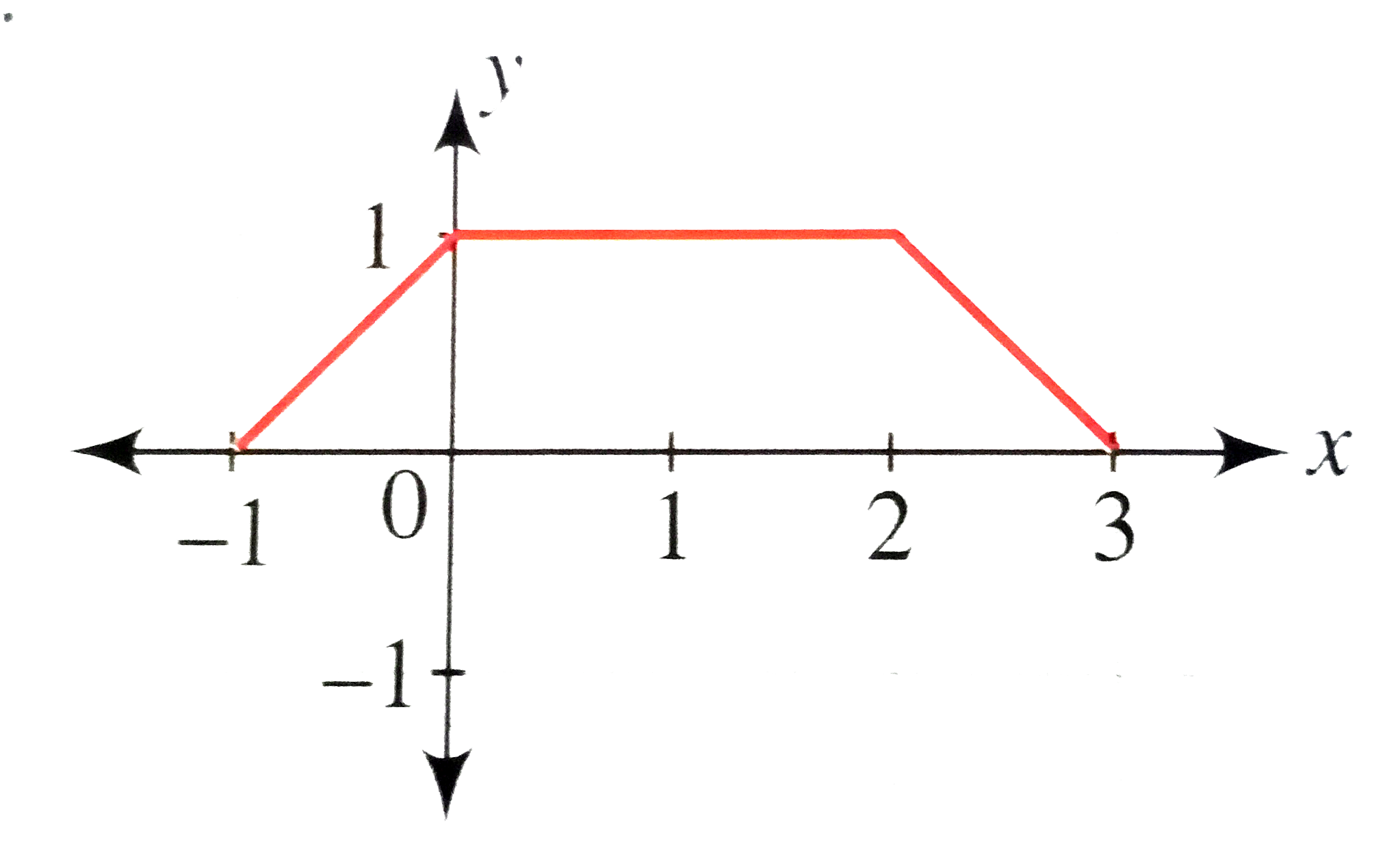A pair of curves y=f1(x) and y=f2(x) are such that following conditions are satisfied.(i) The tangents drawn at points with equal abscissae intersect on y-axis.(ii) The normals drawn at points with equal abscissae intersect on x-axis. Answer the question:Which of the following is true (A) f'1(x)+f'2(x)=c (B) f'1(x)−f'2(x)=c (C) f'21(x)−f'21(x)=c (D) f'21(x)+f'22(x)=c
To solve the problem, we need to analyze the conditions given for the curves y=f1(x) and y=f2(x).
Step 1: Understand the Tangent Condition
The first condition states that the tangents drawn at points with equal abscissae (let's say x1) intersect on the y-axis. The equation of the tangent to the curve y=f1(x) at the point (x1,f1(x1)) is given by:
y−f1(x1)=f′1(x1)(x−x1)
Similarly, for the curve y=f2(x):
y−f2(x1)=f′2(x1)(x−x1)
Step 2: Find the Intersection on the Y-axis
To find where these tangents intersect the y-axis, we set x=0:
For f1:
y=f1(x1)−f′1(x1)x1
For f2:
y=f2(x1)−f′2(x1)x1
Since they intersect on the y-axis, we equate these two expressions:
f1(x1)−f′1(x1)x1=f2(x1)−f′2(x1)x1
Rearranging gives us:
f1(x1)−f2(x1)=(f′1(x1)−f′2(x1))x1
Step 3: Understand the Normal Condition
The second condition states that the normals drawn at points with equal abscissae intersect on the x-axis. The equation of the normal to the curve y=f1(x) at (x1,f1(x1)) is:
y−f1(x1)=−1f′1(x1)(x−x1)
Setting y=0 to find the intersection with the x-axis:
0−f1(x1)=−1f′1(x1)(x−x1)
This leads to:
x=x1−f1(x1)f′1(x1)
For the curve y=f2(x):
0−f2(x1)=−1f′2(x1)(x−x1)
This leads to:
x=x1−f2(x1)f′2(x1)
Step 4: Find the Intersection on the X-axis
Since the normals intersect on the x-axis, we equate the two expressions:
x1−f1(x1)f′1(x1)=x1−f2(x1)f′2(x1)
This simplifies to:
f1(x1)f′1(x1)=f2(x1)f′2(x1)
Step 5: Derive the Relationship
From the two derived equations, we have:
1. f1(x1)−f2(x1)=(f′1(x1)−f′2(x1))x1
2. f1(x1)f′1(x1)=f2(x1)f′2(x1)
By analyzing these equations, we can conclude that the derivatives of the functions must satisfy a linear relationship. Specifically, we can derive that:
f′1(x)−f′2(x)=c
where c is a constant.
Conclusion
Thus, the correct answer is:
(B) f′1(x)−f′2(x)=c
y=f1(x1)−f′1(x1)x1
y=f2(x1)−f′2(x1)x1
2. f1(x1)f′1(x1)=f2(x1)f′2(x1)
Similar Questions
A pair of curves y=f1(x) and y=f2(x) are such that following conditions are satisfied.(i) The tangents drawn at points with equal abscissae intersect on y-axis.(ii) The normals drawn at points with equal abscissae intersect on x-axis. Answer the question:If curve y=f1(x) passes through (1,1) and curve y=f2(x) passes through (2,3)
View SolutionCurves y=f(x) passing through the point (0,1) and y=∫x−∞f(t)dt passing through the point (0,1n) are such that the tangents drawn to them at the point with equal abscissae intersect on x-axis. Answer the question:The equation of curve y=f(x)
View SolutionGiven the curves y=f(x) passing through the point (0,1) and y=∫x−∞ f(t) passing through the point (0,12) The tangents drawn to both the curves at the points with equal abscissae intersect on the x-axis. Then the curve y=f(x), is
View SolutionArea bounded by y=f−1(x) and tangent and normal drawn to it at points with abscissae π and 2π, where f(x)=sinx−x is
View SolutionIf the graph of y=f(x) is symmetrical about the lines x=1andx=2, then which of the following is true? (a)f(x+1)=f(x) (b) f(x+3)=f(x) (c)f(x+2)=f(x) (d) None of these
View SolutionCurves y=f(x) passing through the point (0,1) and y=∫x−∞f(t)dt passing through the point (0,1n) are such that the tangents drawn to them at the point with equal abscissae intersect on x axis. find Curve y=f(x)
View SolutionGiven the graph of y=f(x).

Draw the graphs of the followin.
(a) y=f(1−x) (b) y=−2f(x)
(c) y=f(2x) (d) y=1−f(x)
View SolutionWe are given the curves y=∫x−∞f(t) dt through the point (0,12) and y=f(X), where f(x)>0 and f(x) is differentiable, ∀x∈R through (0,1). If tangents drawn to both the curves at the point wiht equal abscissae intersect on the point on the X-axis, then
∫x→∞(f(x))f(−x) is
View SolutionWe are given the curves y=∫x−∞f(t) dt through the point (0,12) and y=f(X), where f(x)>0 and f(x) is differentiable, ∀x∈R through (0,1). If tangents drawn to both the curves at the point wiht equal abscissae intersect on the point on the X-axis, then
The function f(x) is
View SolutionIf f(x)=ax, which of the following equalities do not hold ? (i) f(x+2)−2f(x+1)+f(x)=(a−1)2f(x) (ii) f(−x)f(x)−1=0 (iii) f(x+y)=f(x)f(y) (iv) f(x+3)−2f(x+2)+f(x+1)=(a−2)2f(x+1)
View Solution